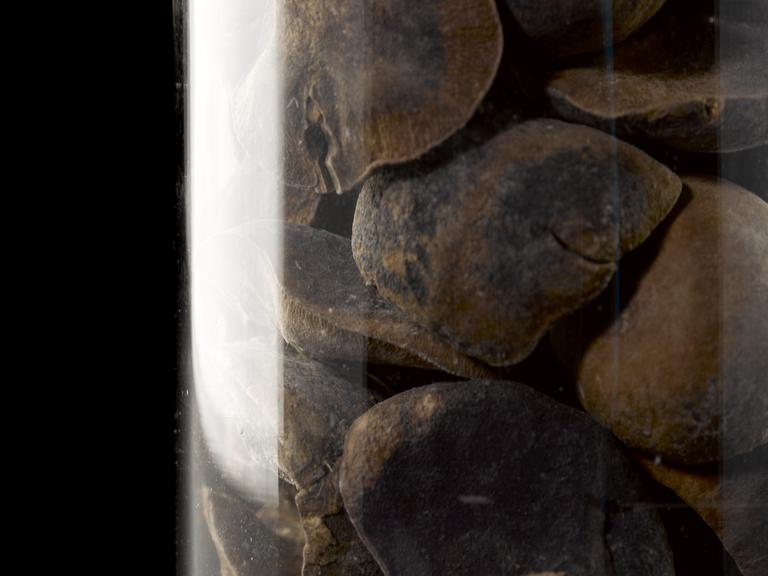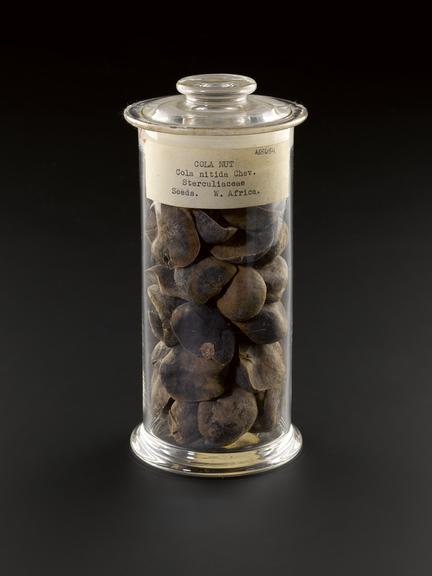









Tall cylindrical clear glass jar with circular stopper, contains large brown kola nuts from Africa or West Indies(?), bottled in England, 1830-1920
Kola – a bitter tasting, chestnut-sized nut, often reddish or white in colour – grows in the West African tropical forest. Kola nuts have served a range of religious, social, economic and health functions for West African peoples for over a thousand years.
They are known by various African names, including goro, ombéné, nangoué, kokkorokou, and matrasa. Kola trees only grow in certain areas, but their nuts have been found hundreds of miles away. The nuts require careful transportation after harvesting, so their historic distribution demonstrates the strength of trade networks across Africa as early as the first millennium AD.
Because of its high caffeine content, the two commonest species, Cola nitida and Cola acuminata, are chewed in many West African countries as a stimulant stronger than coffee or tea. These properties led to its being exploited by European colonisers for use in medicines such as caffeinated tablets and elixirs. One such product was ‘Forced March’ by Burroughs Wellcome and Co., a tablet which claimed to ‘allay hunger and prolong the power of endurance’. Perhaps most notably, Kola was one of Coca-Cola’s original ingredients, giving the product its distinct taste.
The kola nut remains popular in everyday West Africa life, being gifted and eaten at significant occasions. Today there is significant renewed interest, particularly among West African medical and plant scientists, in re-investigating its health properties as well as the historically neglected leaves of the kola tree itself.
Details
- Category:
- Materia Medica & Pharmacology
- Collection:
- Sir Henry Wellcome's Museum Collection
- Object Number:
- A656154
- Materials:
- glass
- type:
- specimen jars
- credit:
- Loan, Wellcome Trust

